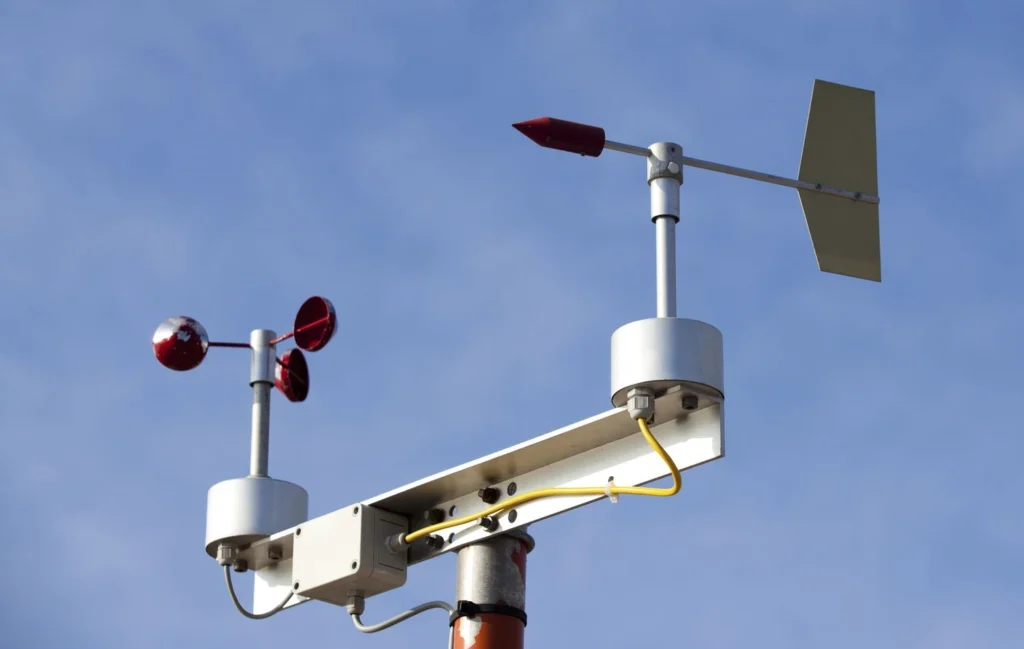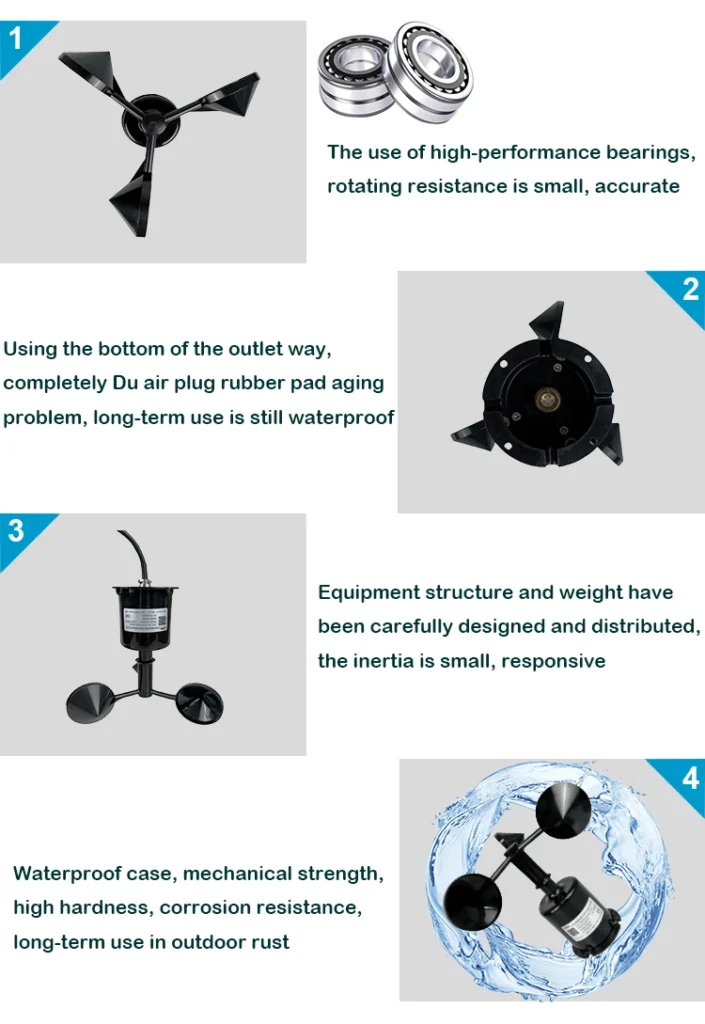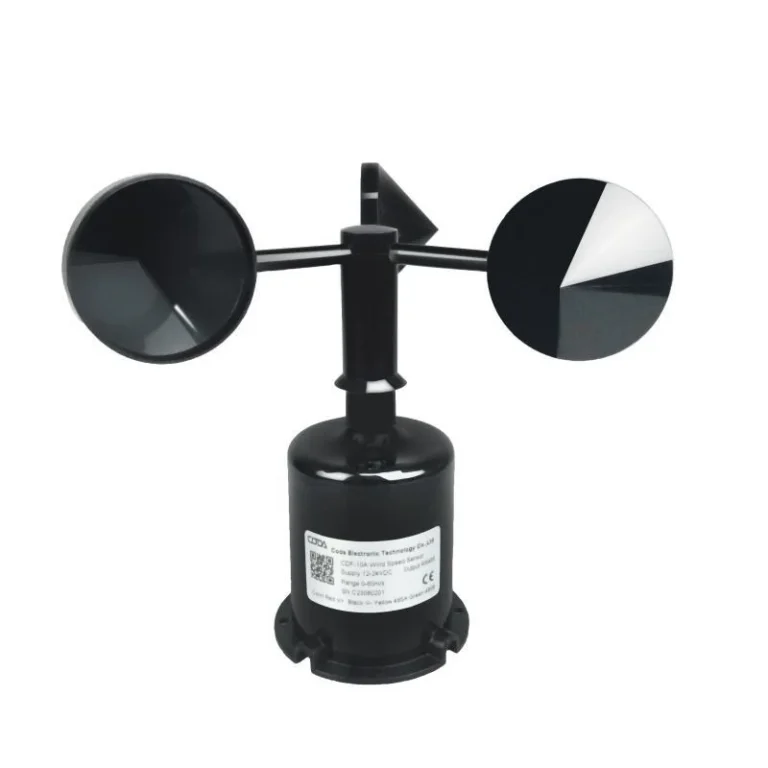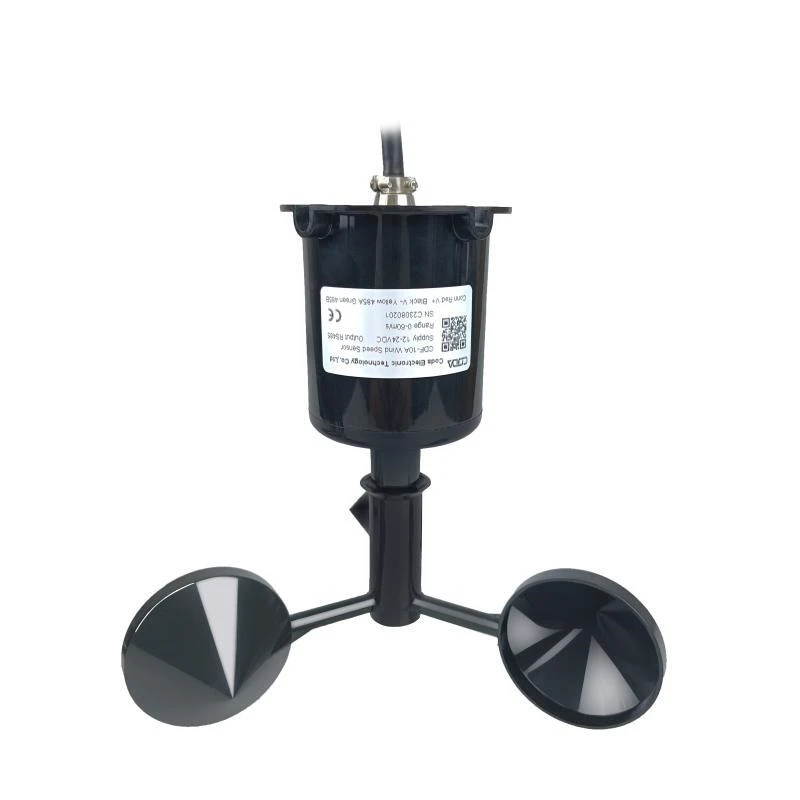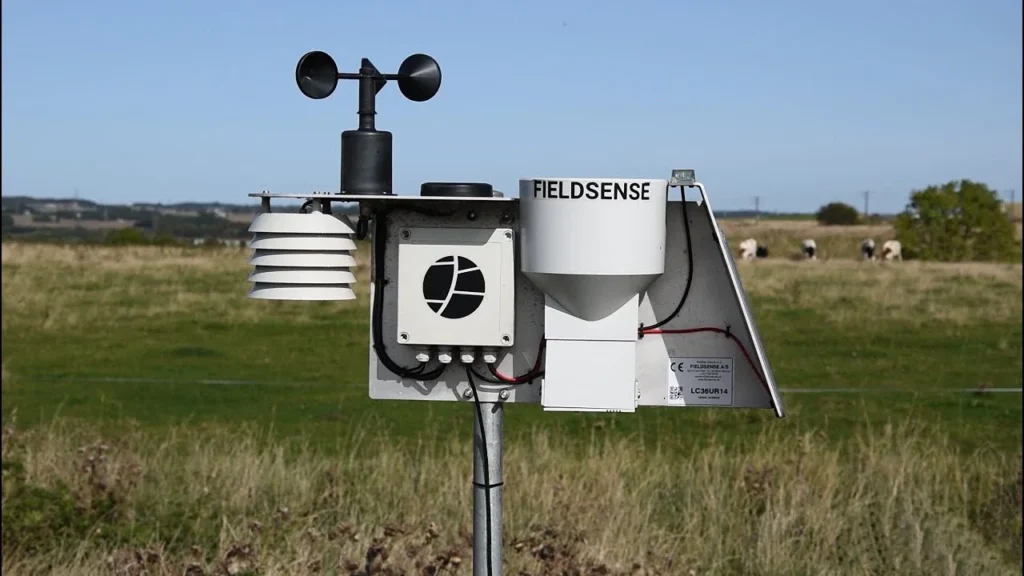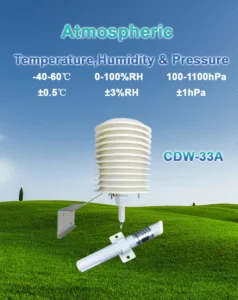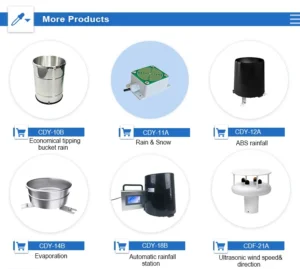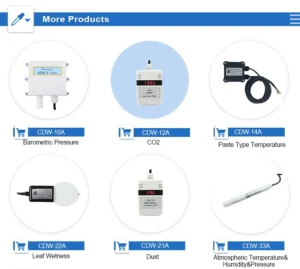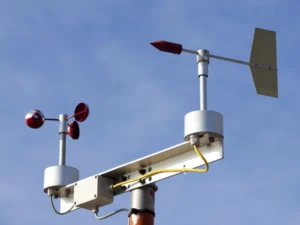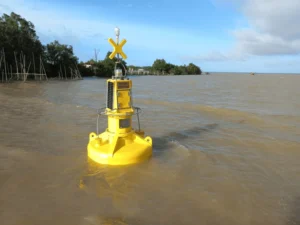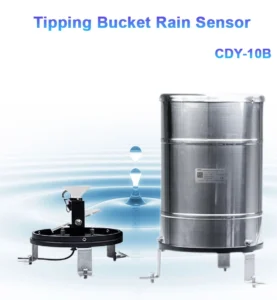types of anemometer
1. Cup anemometer:
This type of anemometer consists of three or four cups that rotate on a horizontal axis. The speed of rotation is proportional to wind speed. Weather stations widely use cup aneometer because they offer simplicity, reliability, and accuracy.
2.A vane aneometer
A wind vane measures wind direction. It has a rotating propeller that measures wind speed. The wind moves the vane, and the propeller spins faster when the wind is stronger. People often use vane anemometers in aviation and weather studies.
3 hot-wire anemometer measures wind speed.
It uses a thin wire that is heated with electricity. As wind flows across the wire, it cools down, and the electrical resistance of the wire changes. We use this change in resistance to calculate wind speed.
Hot-wire pitot tube anemometers are very sensitive tools. They can measure low wind speeds accurately. This makes them helpful for research and development.
4.Ultrasonic Anemometer
An ultrasonic anemometer, also called an ultrasonic wind sensor, measuring air wind velocity and direction. It uses sound waves and has no moving parts like cups or vanes.
It measures the time difference of ultrasonic signals from transducers. This makes it strong and needs no maintenance. It is also suitable for tough environments.
Here are detailed descriptions of the four types of aneometer:
1. Cup aneometer:
A cup anemometer usually has three or four cups. These hemispherical cup are placed on horizontal arms that cross each other. The designers made the cups to catch the wind well. This design allows them to spin smoothly around a central axis.
– Function: As the wind blows, the cups begin to spin. The speed of spinning depends on how fast the wind is. The anemometer has sensors that count how many times the cups turn in a set time. This helps measure the average wind speed.
Application: Weather stations often use cup anemometers. They give reliable and accurate wind speed measurements. Researchers also use them for environmental monitoring and research.
2. Vane anemometer:
– Structure: A vane anemometer has a wind vane and a rotating propeller. The wind vane is mounted horizontally. This lets it rotate freely and align with the wind direction. The propeller is mounted vertically and connected to a sensor.
Function: When the wind blows, the wind vane turns to show the wind direction. At the same time, the propeller spins faster as the wind speed goes up. The sensor measures how fast the propeller spins and gives information about wind speed.
Application: Aviation and meteorology often use vane anemometers to check wind speed and direction. HVAC systems and environmental monitoring use them too.
3. Hot-wire anemometer:
– Structure: A hot-wire anemometer has a thin wire made of a material that reacts to temperature, like platinum. The wire is heated with electricity and placed in the wind. It also has temperature sensors and electrical parts.
– Function: As the wind flows across the wire, it cools down the wire, causing a change in its resistance. The electrical circuitry measures this change in resistance, which is then used to calculate the wind speed.
– Application: Hot-wire anemometers are very sensitive and can measure low wind speeds well. They are often used in research and development. This includes studies in fluid dynamics, aerodynamics, and environmental monitoring. These uses require accurate measurements in specific settings.
4.Ultrasonic Wind Speed Sensor
– Structure: The sensor has several pairs of ultrasonic transducers, usually three to four. These transducers are placed at fixed angles. Each transducer sends out high-frequency sound waves, which are above 20 kHz. The wind changes how long these waves take to travel to the receiver.
– Function: Ultrasonic wind speed sensors are a reliable and maintenance-free choice compared to traditional mechanical anemometers. They combine accuracy with durability for many uses.
These sensors work well in extreme conditions and give real-time data. This makes them important for weather monitoring, renewable energy, and industrial systems. Always check the manufacturer’s guidelines for installation and calibration of specific models.
– Application: Here is the adjusted text:
“Offers real-time wind data for climate research and weather tracking. It helps pilots and sailors check conditions for takeoff and landing. They can also navigate through rough seas. This data lets self-driving vehicles adjust to wind conditions while flying or moving.”
